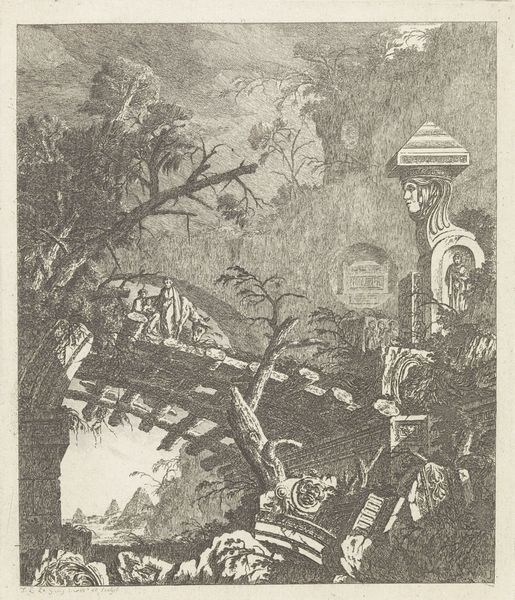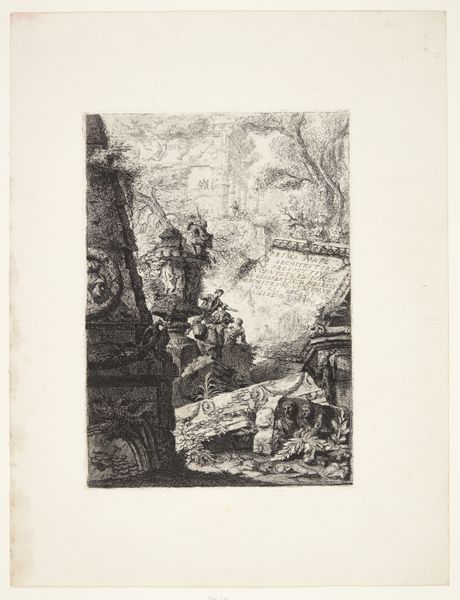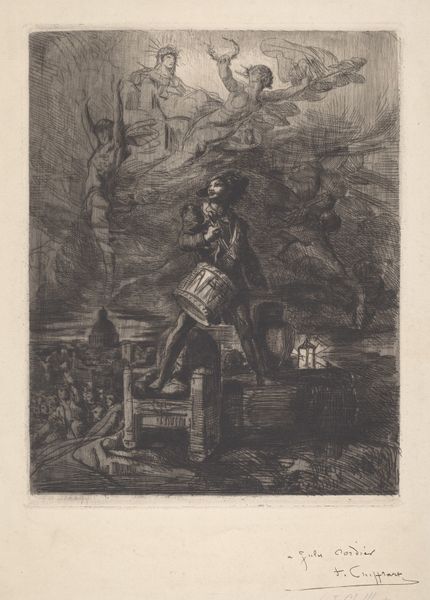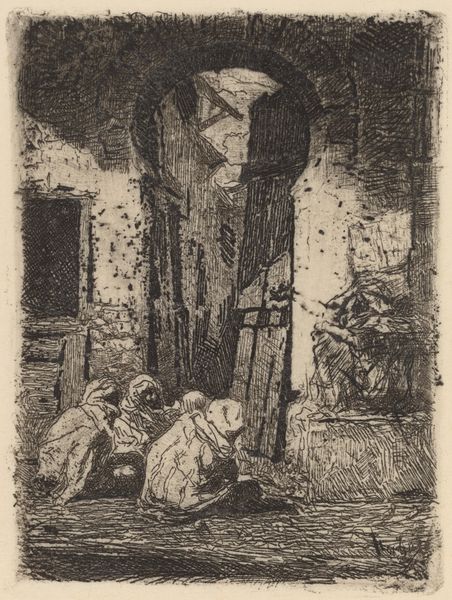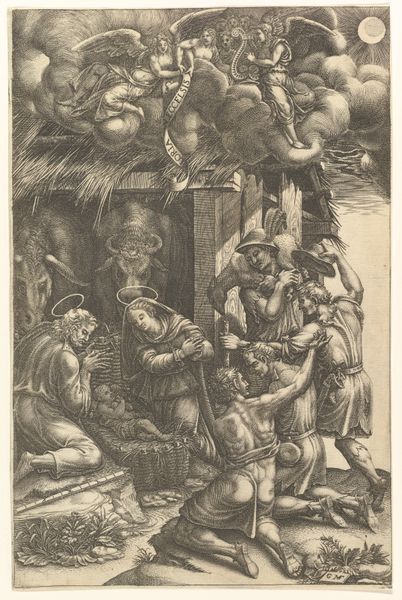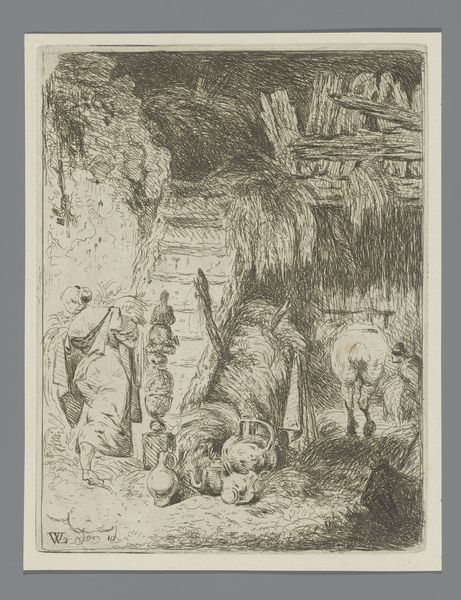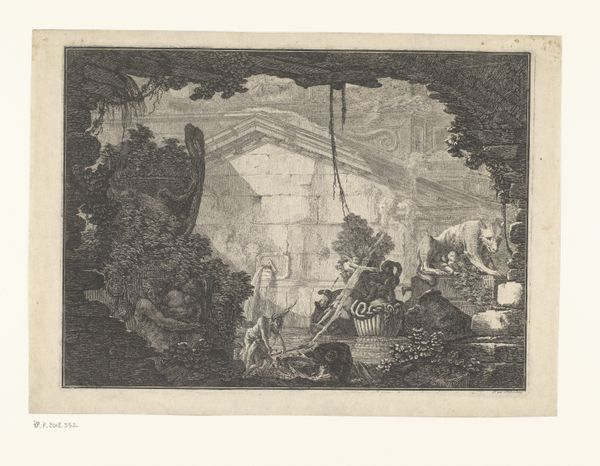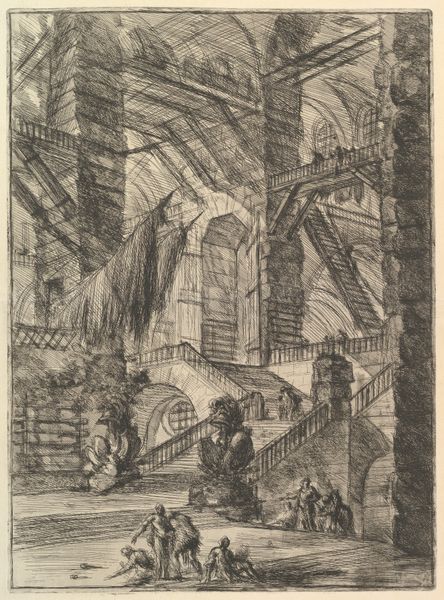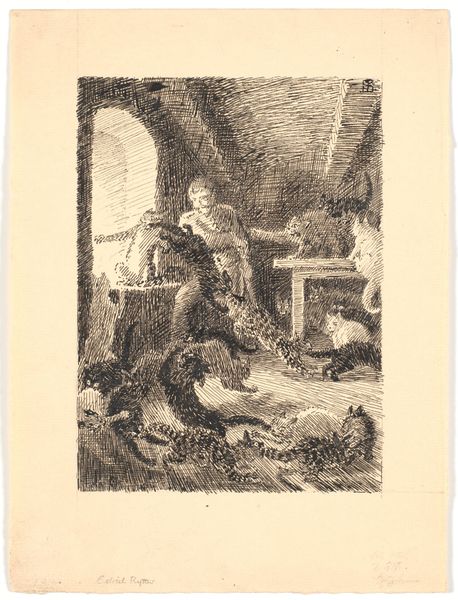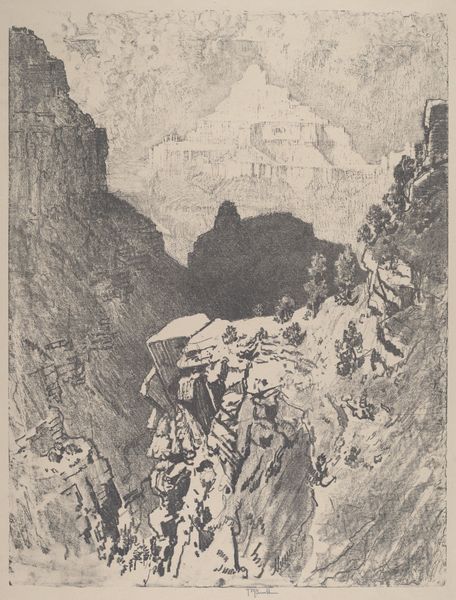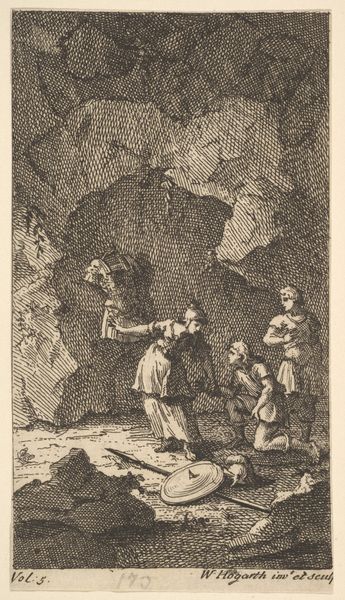
Frontispiece from "Prima Parte di Architetture, e Prospettive" 1745 - 1755
0:00
0:00
drawing, print, etching, engraving, architecture
#
drawing
#
baroque
# print
#
etching
#
human-figures
#
landscape
#
history-painting
#
engraving
#
architecture
Dimensions: Sheet: 15 13/16 x 10 1/16 in. (40.2 x 25.5 cm) Plate: 14 3/16 x 13 5/16 in. (36 x 33.8 cm)
Copyright: Public Domain
Curator: Piranesi's Frontispiece from "Prima Parte di Architetture, e Prospettive," dating from around 1745-1755, offers an intricate visual landscape. He worked with etching and engraving. What's your immediate take? Editor: An immediate feeling of fragmented grandeur. Everything seems crumbling yet teeming with figuration and dense materiality. I want to know how he layered these marks. Curator: Look at the figures—they seem almost oblivious amidst these ruins. The "Prima Parte" text appears carved as part of these ruins. To me, it hints at the power of architecture as a statement throughout time. What kind of architecture do you imagine these figures built to become so eroded? Editor: That text being part of the structure really messes with notions of origin and time. He's conflating past grandeur with his contemporary moment. What's even more interesting to me is to look at the paper and the etchant itself. What was he using, and who was employing him? What about distribution methods of Piranesi's work? Curator: Certainly, the materiality and context surrounding this piece would shed further light. I find his blending of the real with imagined reconstructions compelling. We should keep in mind this era had a fascination with antiquity. These pieces function as meditations on memory and influence. Look how the trees and structures are interwoven. Editor: Absolutely. His etching engages with ruin, yes, but he uses sophisticated printmaking techniques to craft what is really a vision for the future and not just something derivative or nostalgic. In a way, ruins become his raw material, not an end product of cultural production. Curator: Well said. These imagined landscapes capture more than historical reflection, after all. Editor: This image invites us to appreciate its physical components and the cultural environment in which this was created, so let's leave our listeners with this challenge today!
Comments
No comments
Be the first to comment and join the conversation on the ultimate creative platform.
